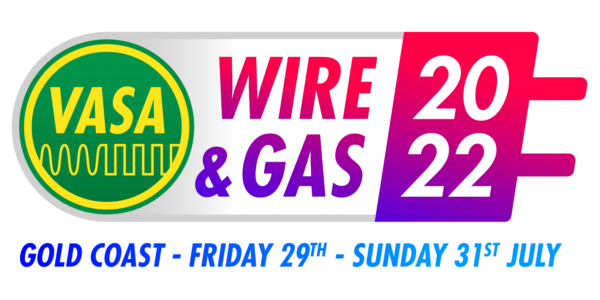COVID-19 advice and support for automotive repair businesses
- PostedPublished 24 March 2020

UPDATED: August 14, 2020 with details of metropolitan Melbourne Stage 4 measures.
The below advice is largely based on information produced by the Australian Automotive Aftermarket Association and as such is relevant to Australian businesses only.
AAAA has also kindly agreed to share with VASA members its excellent, informative series of webinars designed to help automotive businesses navigate the COVID-19 pandemic and related government support. These webinars can be accessed through the members-only section of the VASA website. VASA will update this page every time a new webinar is posted.
No equivalent for the NZ automotive industry appears to be published, although MTA NZ has kindly provided VASA with market-specific information that can be found at the end of this page under the heading NZ Resources. Otherwise, official guidance for NZ businesses and the NZ alert system guide. However, New Zealand has published a list of essential businesses on its official government COVID-19 response website.
In most of Australia (except Victoria):
- With the exception of public (as opposed to online) vehicle auctions, the entire Australian automotive industry remains open for business, from sales of any vehicle type to the most minor repairs.
- All businesses operating must meet social-distancing guidelines — keeping people 1.5 metres apart, and ensuring 4 square metres per person — and not have gatherings of more than 100 people indoors.
- Businesses are encouraged to adjust work practices around these guidelines in order to keep operating, such as arrange for staff to work from home.
In metropolitan Melbourne (as interpreted from publicly available information, call Business Victoria on 13 22 15 if unsure about your situation):
Motor vehicle repair and service
Can continue in businesses with a COVID Safe Plan, so long as the work is providing repair and service for essential services and trade. Minimum possible staff in the workshop when required and no public onsite access. All staff must use masks, hygiene stations and social distancing at all times plus restricted access to common areas.
Vehicle modifications
Difficult to interpret as some modifications (such as adding roof racks for example) does not constitute vehicle repair, servicing or maintenance. To be on the safe side, work must be with the intent of supporting the repair of vehicles.
Parts suppliers
Can continue business with COVID Safe Plan. Supply to essential services and trade plus fulfilling online orders or contactless collection is allowed provided restrictions, hygienic practices, and social distancing are adhered to with high caution. Warehouses must have the minimum possible staff and all must use masks, hygiene stations and social distancing at all times plus restricted access to common areas.
Sole traders
Can continue to operate if they have zero contact with the public or people other than those living in their primary household.
Retailers
Front door retail must be closed and shopfronts must be closed to public access. Retailers can work onsite for the purposes of fulfilling online and phone orders. Contactless pick-up is allowed provided restrictions, hygienic practices, and social distancing are adhered to with high caution. Must operate with the minimum possible staff and all must use masks, hygiene stations and social distancing at all times plus restricted access to common areas.
Apprentice and trainee support plus cashflow assistance for automotive businesses in Australia
For NZ latest, visit the NZ Work & Income web page for employer support
This information is sourced from the AAAA. NZ financial stimulus information is on the official government COVID-19 response website.
The Australian federal government has announced a significant stimulus package to assist business most likely to face significant financial hardship as a result of the COVID-19 pandemic, including those in the automotive sector.
There are two cash flow assistance options available; it is essential for small and medium automotive businesses to review eligibility and access to available funding.
Small business with fewer than 20 full-time employees that employ and wish to retain an apprentice or trainee (as of March 1 2020)
You can apply for up to 50 per cent of their wage for nine months with a maximum of $21,000 per eligible apprentice or trainee or $7000 per quarter. Registrations open in early April, so be ready as you will be required to apply for the wage subsidy.
UPDATE: The Apprentice Wage Subsidy has been extended to March 31, 2021 and the eligibility criteria broadened to include medium-sized businesses under the JobTrainer banner.
Eligible small (up to 20 employees) and medium-sized (up to 199 employees) businesses can now apply for a 50% subsidy of apprentice or trainee wage. Medium-sized businesses can apply for wages paid from 1 July 2020.
In addition, if your business re-engages eligible apprentices who were retrenched by another eligible small or medium business, you may also qualify for these subsidies.
Small and medium business (under $50 million turnover)
By submitting your Business Activity Statement (BAS) on time, you may be eligible for between $10,000 and $50,000 cashflow assistance back into your business (up from $2000-$25,000).
JobKeeper Payment
This is a fortnightly payment of $1,500 before tax per employee, per fortnight, for up to six months. It is targeted at businesses affected by the shutdowns in response to the spread of COVID-19, including self-employed sole traders.
Businesses and sole traders turning over less than $1 billion annually are eligible if experiencing more than a 30 per cent reduction in trade lasting more than a month compared with the year prior. For those turning over more than $1b, the reduction in trade must be more than 50 per cent.
UPDATE: THE Australian Government’s JobKeeper support package has been extended to March 28 2021, with a few catches.
JobKeeper eligibility tests requiring businesses to demonstrate ongoing impacts to their turnover will continue each quarter and the payouts will be smaller.
After September, the flat-rate JobKeeper payment will be reduced from $1500 to $1200 per fortnight and a lower payment of $750 a fortnight will be introduced for those working less than 20 hours a week.
From January 4 next year to March 28, these figures will be further downgraded to $1000 a fortnight for those working more than 20 hours a week and $650 for those working less than 20 hours a week.
Increased instant asset write-off
The instant asset write-off threshold has been increased from $30,000 to $150,000 and now includes businesses with an aggregated annual turnover of less than $500 million (previously $50m). This applies from March 12 2020 until June 30 2020, for new or second‑hand assets first used or installed ready for use in this timeframe.
Backing Business Investment
For depreciation deductions that do not fall within the increased instant asset write-off, BBI is a 15-month investment incentive for items that exceed the $150,000 threshold or will not be first used or installed ready for use by June 30.
Download a PDF with full details of Stimulus Part 1 from the AAAA
Downlaod a PDF with full details and examples of Stimulus Part 2 from the AAAA
More details of the JobKeeper Payment from the AAAA
Download a PDF of information about increased instant asset write-off and BBI from the AAAA
AAAA COVID-19 advice webinars (members only)
Advice for employers affected by COVID-19
The AAAA has produced a bulletin in partnerships with Industry Legal Group to help businesses navigate their obligations and options with regard to health and safety, isolation and quarantine, employee leave entitlements and the implications of work shortages and stoppages.
Download the guide direct from AAAA
NZ members refer to official guidance for NZ businesses
Bank assistance for Australian small businesses
Depending on individual circumstances, assistance available from Australian banks varies and includes loan repayment breaks, debt consolidation and waived or reduced fees.
Support for businesses impacted by Victorian lockdown 2.0
Businesses directly affected by the second lockdown in metropolitan Melbourne and Mitchell Shire may be eligible for a one-off $5,000 grant from the Victorian Government.
In addition to being located in one of the 31 lockdown areas, to be eligible businesses must already be a WorkSafe-registered employer enrolled in JobKeeper with an annual payroll of less than $3 million in the 2019-20 financial year.
Businesses must also have an Australian ABN, registered for GST and registered with the responsible state or federal regulator in order to qualify.
Mandatory masks in Melbourne and Mitchell shire: Your obligations
Most motor trades associations publish up-to-date COVID-19 advice for the automotive sector in their state or territory, which can be reached at the links below:
- New Zealand
- New South Wales
- Victoria & Tasmania
- Queensland
- South Australia
- Western Australia
- MTAA (National body for Australian MTAs)
MTA ACT and MTA NT do not appear to have yet published COVID-19 advice online.
Below is a list of all COVID-19 related information published by AAAA as of April 27, 2020:
- Health & Wellbeing Update for Members
- Auto Industry Welcomes COVID-19 Stimulus Payments
- COVID-19 Stimulus Package – JobKeeper Payment
- Coronavirus (COVID-19) – Australian Government Assistance Packages – Update for AAAA Members
- Coronavirus Health Notice Poster for your business
- Taking care of your mental health during the Coronavirus Health Crisis
- Coronavirus – Stage 1 restrictions on non-essential services – Status Update for Auto Aftermarket
- Coronavirus Health Crisis – Auto Repair and Parts Supply – An Essential Service
- Coronavirus Cash Flow Assistance: Some good news for automotive businesses
- Special Member Bulletin – Employers Guide for Managing COVID-19 in The Workplace
NZ resources
12-week wage subsidy – $585.80 for full-time staff or $350 for part-time staff for businesses experiencing a revenue drop of at least 30 per cent: https://www.employment.govt.nz/leave-and-holidays/other-types-of-leave/coronavirus-workplace/wage-subsidy/
Business finance guarantee scheme – 80 per cent of risk guaranteed by the government, 20 per cent by the bank: https://www.business.govt.nz/covid-19/business-finance-guarantee-scheme/
Small business cash flow loans – A loan of $10,000 plus $1,800 per employee. No interest if paid back in one year, otherwise it is 3 per cent per annum: https://www.ird.govt.nz/covid-19/business-and-organisations/small-business-cash-flow-loan
Increase in provisional tax threshold from $2,500 to $5,000: https://www.ird.govt.nz/covid-19/business-and-organisations/provisional-tax
Temporary loss carry-back scheme – Businesses expecting to make a loss in either the 2020 or 2021 financial year can use that loss to offset profits made the year before: https://www.ird.govt.nz/covid-19/business-and-organisations/temporary-loss-carry-back-scheme
- CategoriesIn Latest News
- TagsCOVID-19, JobKeeper




